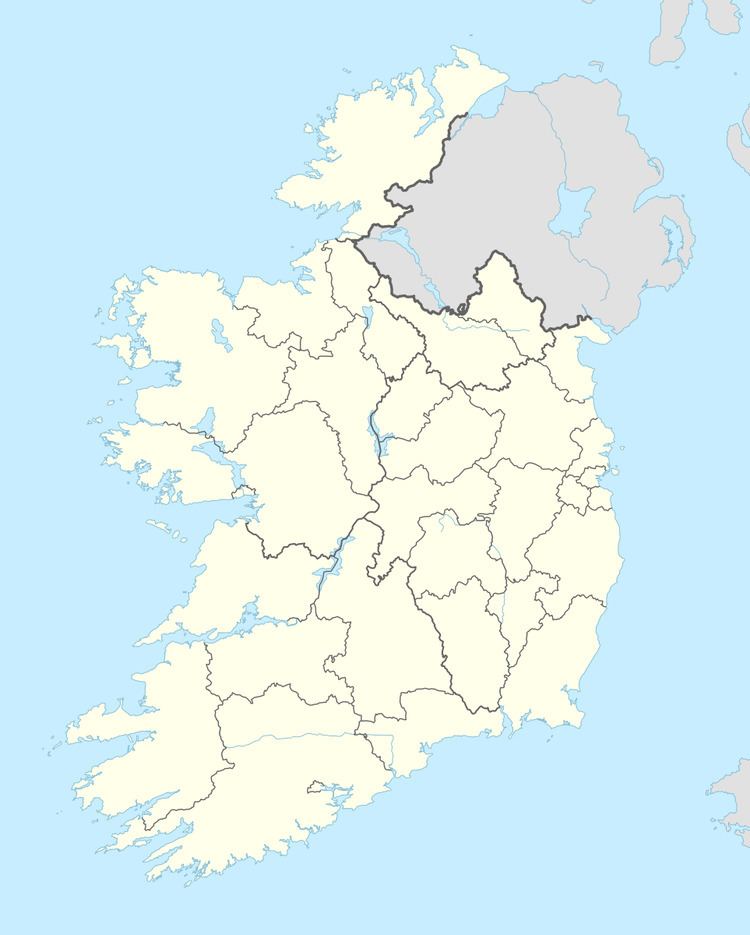Country Ireland Time zone WET (UTC+0) Province Munster | County Waterford Local time Monday 5:22 PM | |
 | ||
Weather 12°C, Wind S at 34 km/h, 96% Humidity | ||
Villierstown (Irish: An Baile Nua, meaning "the new town") is a village in west County Waterford, Ireland. It is situated on the banks of the River Blackwater. The latest census of 2006 recorded the population of the village at 260.
Contents
Map of Villierstown, Co. Waterford, Ireland
The village is approximately 8 kilometres from Cappoquin and 20 kilometres from both Dungarvan and Youghal.
History
Villierstown was founded by the Villiers-Stuart family, from where the name is derived. In the 1740s the 1st Earl Grandison; John Villiers, established the village to develop a linen industry. The village was initially populated with linen-weavers, some of whom were from Lurgan in Co.Armagh. The original village consisted of a church, a rectory, a school, 24 dwelling houses, a court, a police barracks and a quay on the river. All of these buildings are still in the village today, the church has been converted to a community hall, on its grounds is the Villiers-Stuart's family burial vault where many of its ancestors are buried.
During the famine (1845–49) the linen industry in Villierstown died out. Some local people turned to fishing on the Blackwater as a source of employment. The majority of villagers were given work by the Villiers-Stuarts on the estate at Dromana which itself encompassed Villierstown and beyond as far as Dungarvan and Helvick, where the family occasionally resided in the Summer. The Villiers-Stuart family were known to be one of the most civically minded estate holders in Ireland, earlier Lord Stuart de Decies, himself a Protestant, spent much of his political life furthering the cause of Catholic Emancipation with Daniel O'Connell.
Dromana House
The Villiers-Stuart family and their direct descendants have resided in Dromana House in its different forms for well over 700 years, making it one of the very oldest estates in Ireland prior to the 20th Century. Dromana is perched high above the River Blackwater located between Villierstown and the town of Cappoquin. Dromana House was originally a medieval castle built by the powerful FitzGerald family, soon becoming FitzGerald-Villiers, Villiers, and then finally Villiers-Stuart in 1800, at the entry of the Marquis of Bute's son, Henry Stuart, into the family. By the end of the 17th Century, Dromana House was destroyed after a number of sieges but it was rebuilt. Between the 1750s and 1820s many additions were made to the house including an enormous "great bow-sided ballroom." There were also two large walled gardens on the estate, along with the bastion and banqueting house by the river.
By the 1820s the Dromana estate was in ownership of 40,000 acres (160 km2). Part of this land today makes up Dromana Wood which is currently being managed by Coillte on a long term lease. In 1965 much of Dromana House was demolished thus signalling the end of an era, with the estate itself having been liquidated and seized by the Land Commission, in return for near valueless land bonds.
Much of the estate was divided up, while the architecturally significant stables block, just south of the main avenue, were also demolished by the Commission. The avenue, which stretches up to 5 kilometres from Dromana bridge to the Villierstown gate, is now publicly owned while the well known Hindu Gothic styled gate lodge over the River Finisk is under the responsibility of the local County Council. All that remains today of the house is the smaller 17th century wing, but not without its historical significance. The family had to sell Dromana House in the 1960s, but they were able to buy it back in the early 1990s. The Villiers-Stuarts still reside in Dromana House today. In August 2004 James Villiers-Stuart died and was buried at Villierstown Church.
People
John Treacy, the former athlete and Olympic medalist, who represented Ireland at four Olympic Games between 1980 and 1992, hails from the area.
Parish
It is part of the Roman Catholic parish of Aglish, Ballinameela and Mount Stuart and the Church of Ireland parish of Lismore.
